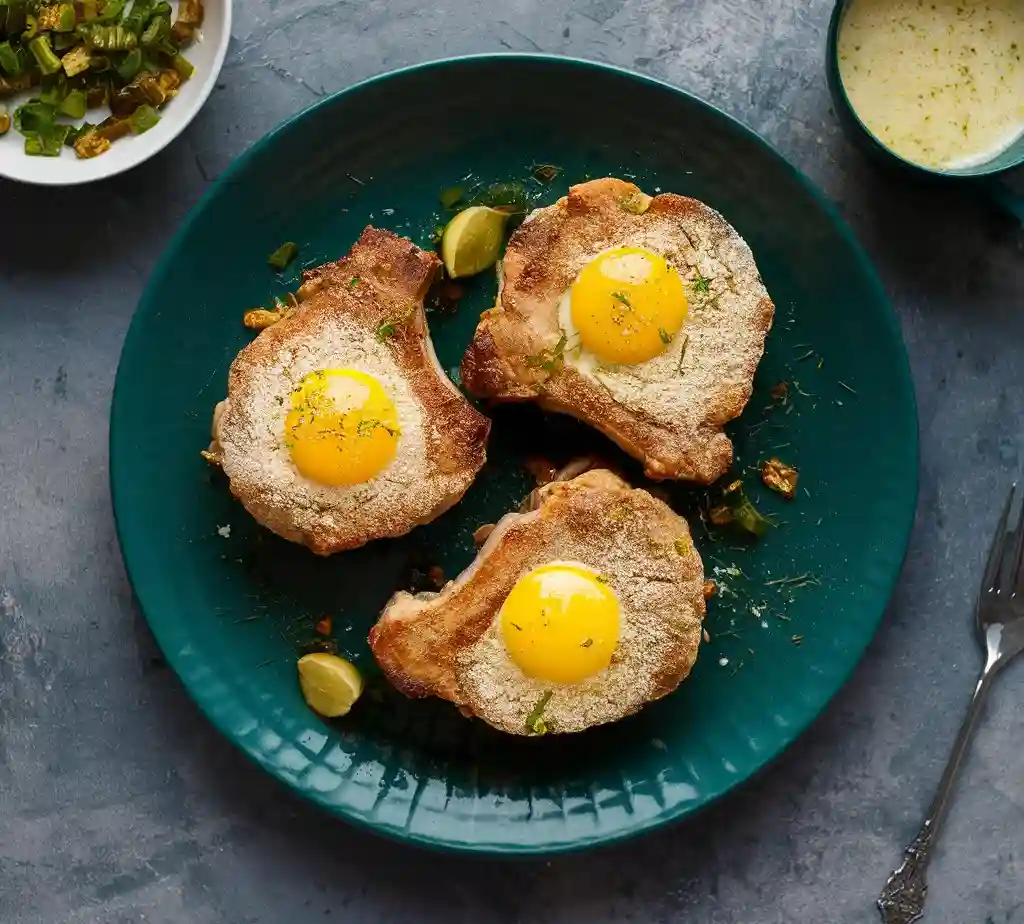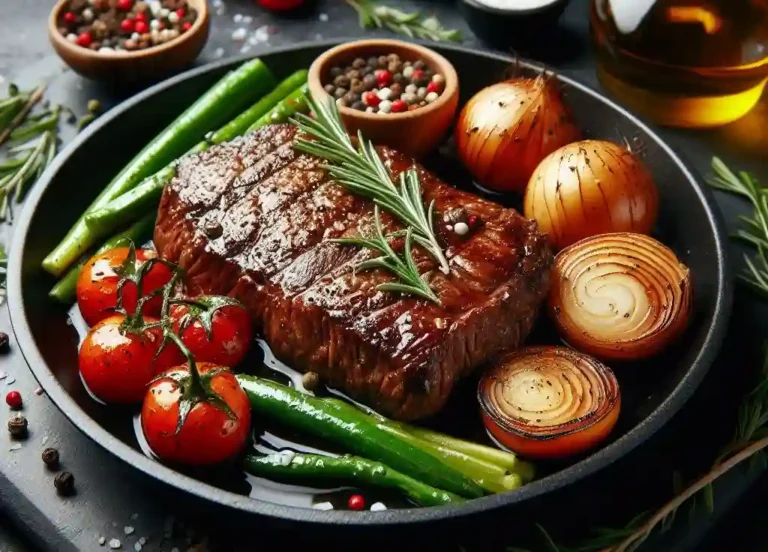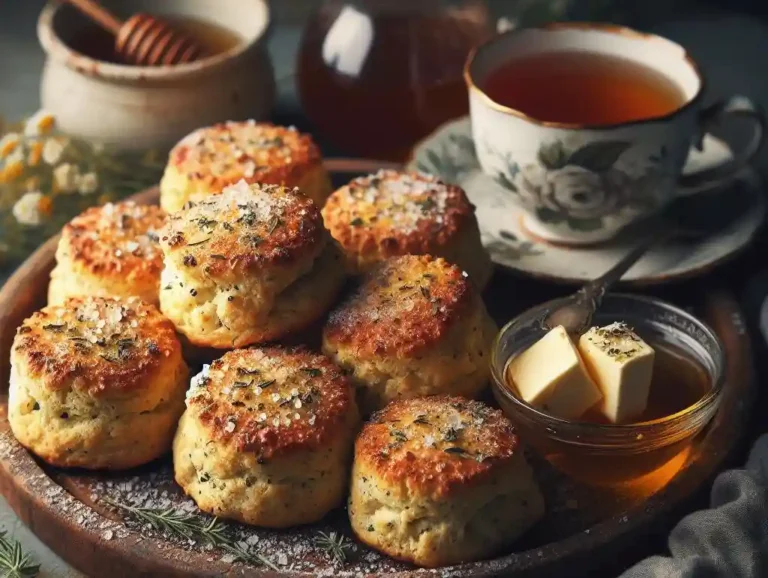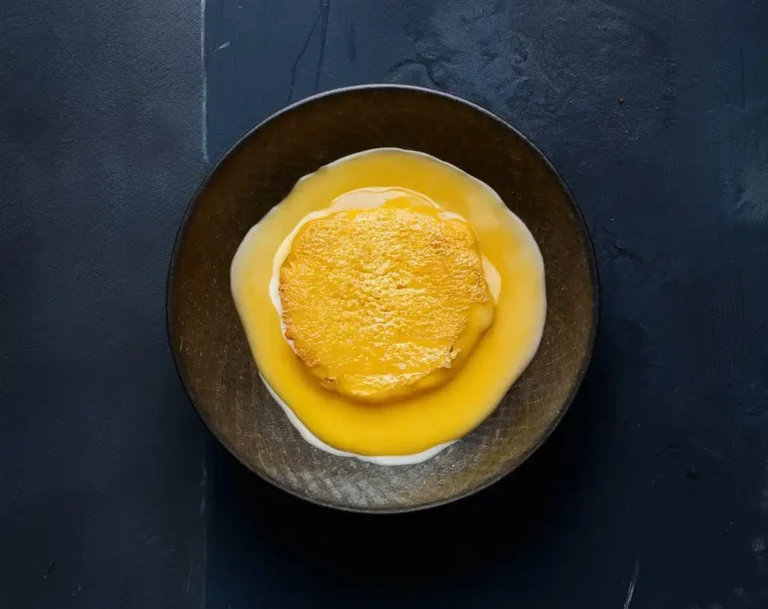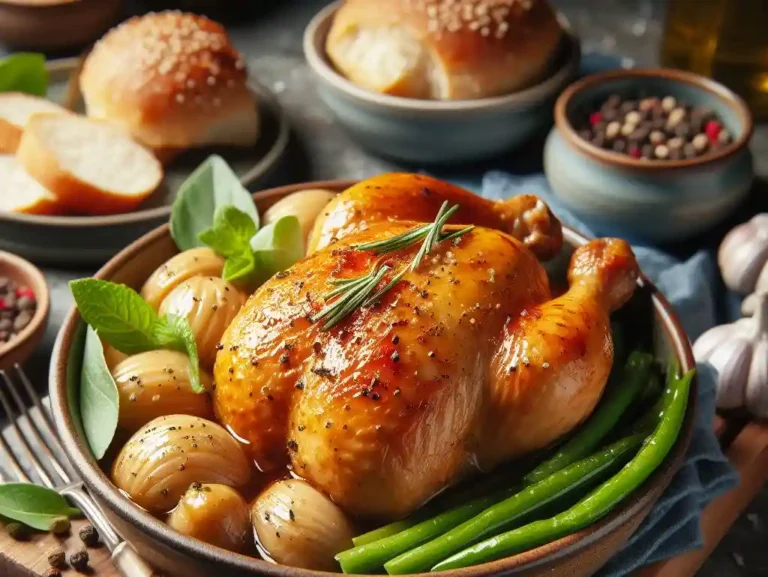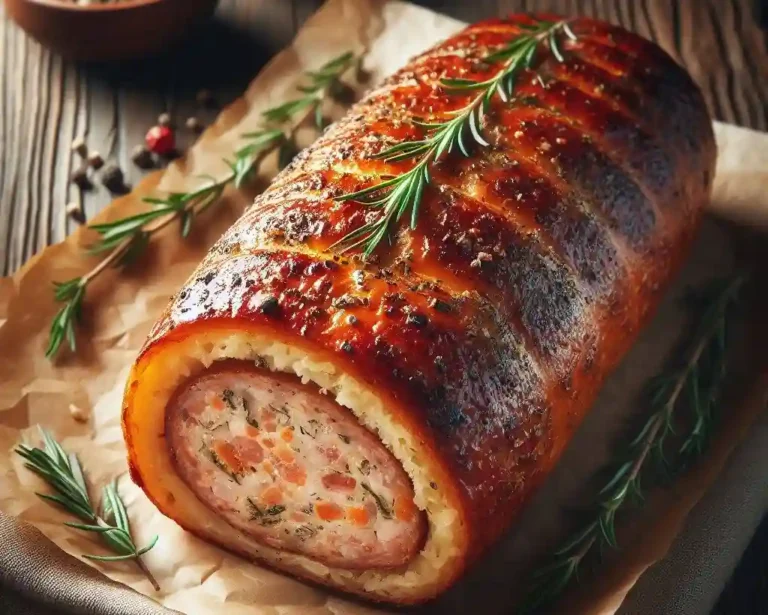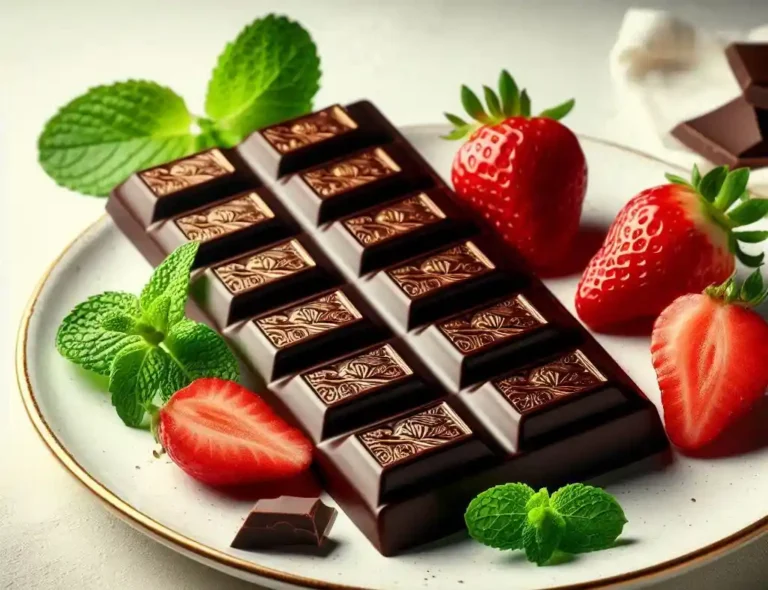How to Fry Pork Chops with Flour and Egg: Golden and Delicious
Frying pork chops with flour and egg is a culinary technique that yields a crispy, golden-brown crust on the outside and a juicy, tender interior.
This classic cooking method is a staple in many cuisines, and for good reason – it’s easy to execute and produces mouthwatering results.
How to Fry Pork Chops with Flour and Egg: A Quick Overview
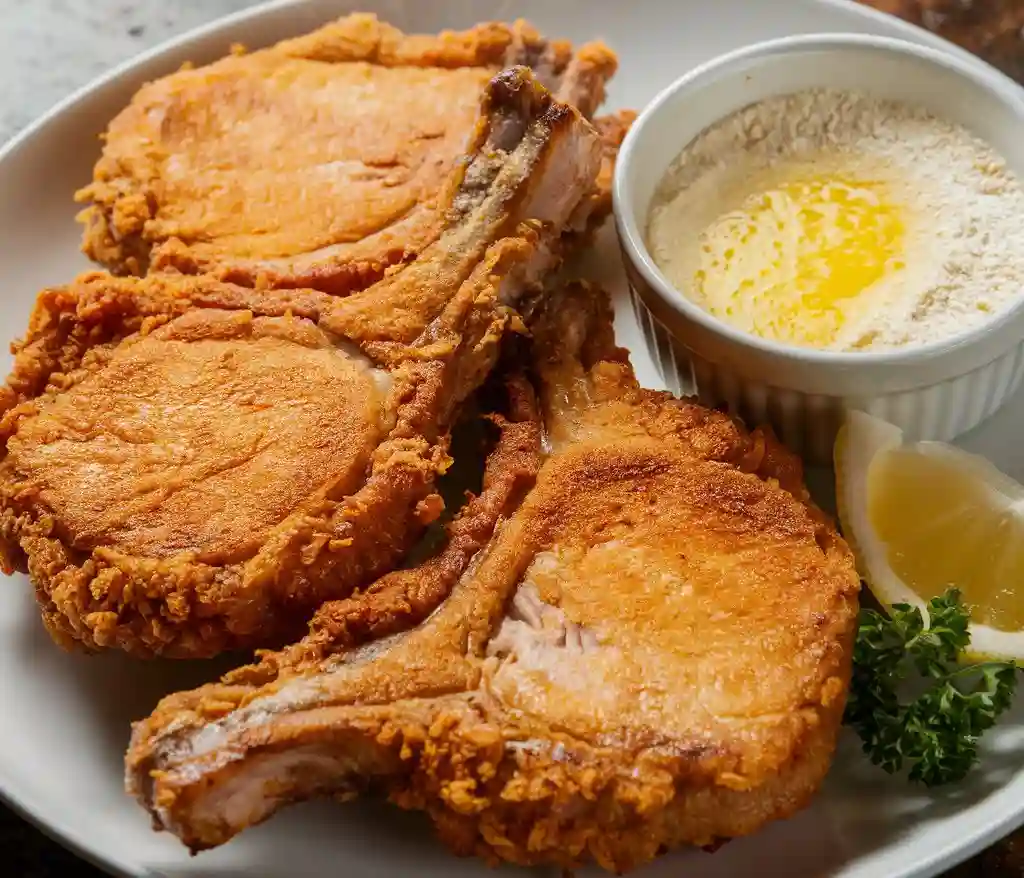
Step 1: Prepare the Pork Chops
- Start by selecting the right cut of pork chops. Look for thick, boneless chops with a good balance of fat and lean meat.
- Trim any excess fat from the edges of the chops, if necessary.
- Season the pork chops with salt, pepper, and any other desired spices or herbs.
Step 2: Prepare the Breading Station
- In one shallow dish, mix together 1-2 cups of all-purpose flour.
- In a separate dish, beat 1-2 eggs.
- In a third dish, mix together any additional breading ingredients, such as panko breadcrumbs, grated Parmesan cheese, or chopped herbs.
Step 3: Dredge the Pork Chops in Flour
- Dip each pork chop into the flour mixture, coating both sides evenly.
- Gently shake off any excess flour.
Step 4: Dip in Egg
- Dip the floured pork chop into the beaten egg, making sure to coat both sides evenly.
- Let any excess egg drip off.
Step 5: Bread the Pork Chops
- Dip the egg-coated pork chop into the breading mixture, pressing the crumbs gently onto the meat to ensure they stick.
- Place the breaded pork chop on a plate or tray.
Step 6: Fry the Pork Chops
- Heat about 1/2-inch (1 cm) of vegetable oil in a large skillet over medium-high heat until it reaches 350°F (175°C).
- Carefully place 2-3 breaded pork chops into the hot oil.
- Fry the pork chops for 3-4 minutes on each side, or until they reach an internal temperature of 145°F (63°C).
- Remove the fried pork chops from the oil with a slotted spoon and place them on a paper towel-lined plate to drain excess oil.
Step 7: Serve and Enjoy!
- Serve the crispy fried pork chops hot with your favorite sides, such as mashed potatoes, roasted vegetables, or a fresh salad.
- Experiment with different seasonings and breading ingredients to create unique flavor combinations.
Tips and Variations:
- For extra crispy breading, chill the breaded pork chops in the refrigerator for 30 minutes before frying.
- Use different types of breadcrumbs, such as panko or gluten-free breadcrumbs, for a lighter or crunchier coating.
- Add flavorings like garlic, paprika, or dried herbs to the flour or breading mixture for added depth of flavor.
- Try using different types of oil, such as avocado oil or peanut oil, for a distinct flavor profile.
Preparing Your Pork Chops for Frying
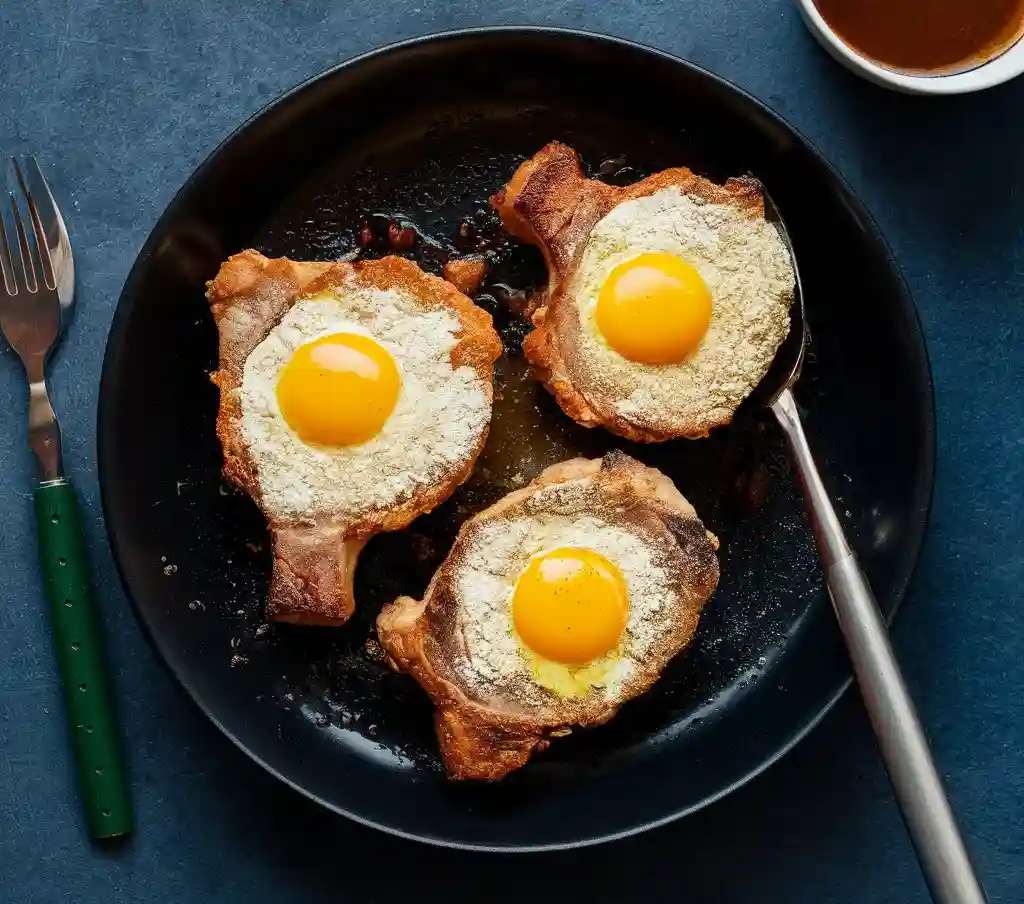
Selecting the Right Pork Chops
- Choose thick, boneless pork chops with a good balance of fat and lean meat.
- Opt for pork chops with a thickness of at least 1 inch (2.5 cm) to prevent overcooking.
- Consider the breed and quality of the pork, as heritage breeds like Berkshire or Tamworth may offer more marbling and flavor.
Trimming and Cleaning
- Trim any excess fat from the edges of the pork chops, if necessary.
- Remove any silver skin or connective tissue from the pork chops, as it can be tough and chewy.
- Pat the pork chops dry with paper towels to remove excess moisture.
Seasoning and Marinating
- Season the pork chops with salt, pepper, and any other desired spices or herbs.
- Let the seasonings sit for at least 30 minutes to allow the flavors to penetrate the meat.
- Consider marinating the pork chops in your favorite marinade for 30 minutes to several hours.
Pounding and Tenderizing
- Use a meat mallet or rolling pin to gently pound the pork chops to an even thickness.
- Consider using a tenderizer like a meat tenderizer tool or a rolling pin to break down the fibers and make the meat more tender.
Resting and Chilling
- Let the seasoned and marinated pork chops rest at room temperature for 30 minutes to 1 hour before breading.
- Chill the pork chops in the refrigerator for at least 30 minutes to firm up the meat and help the breading adhere better.
Tips and Variations
- Use a meat thermometer to ensure the pork chops reach a safe internal temperature of 145°F (63°C).
- Consider brining the pork chops in a saltwater solution before frying for added moisture and flavor.
- Experiment with different seasonings, marinades, and breading ingredients to create unique flavor combinations.
The Flour Coating: A Crucial Step in Achieving Crispy Pork Chops
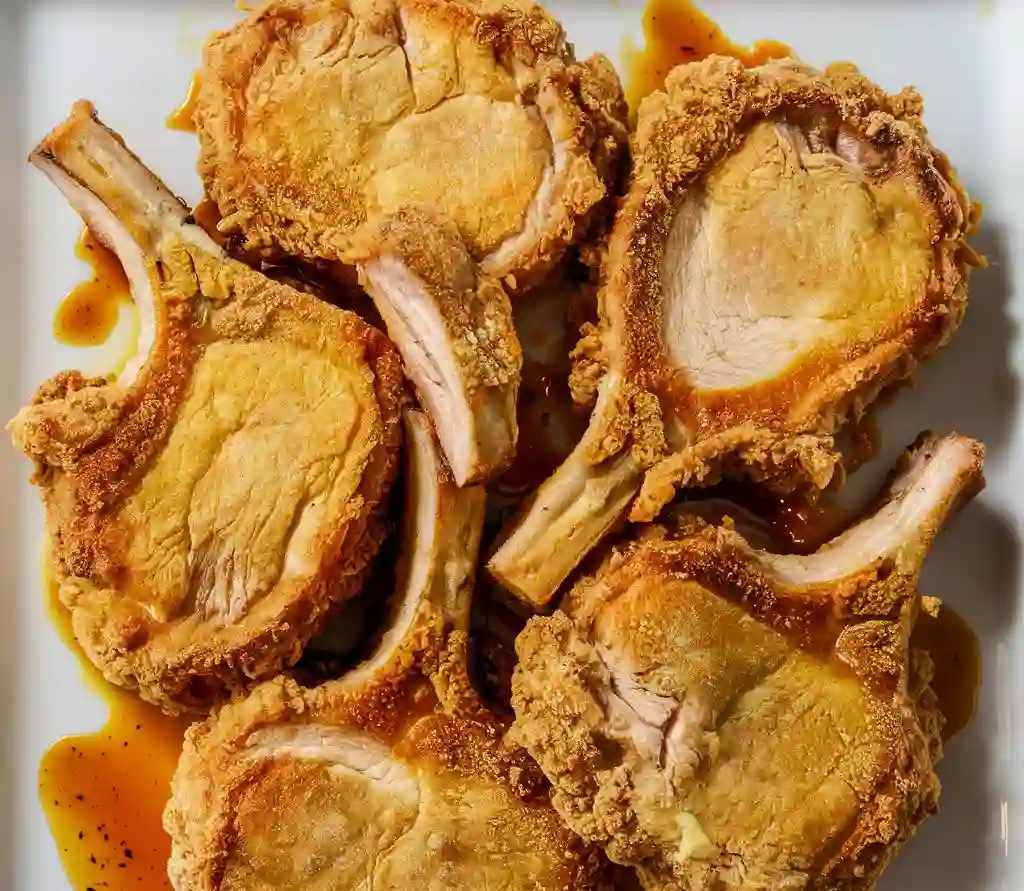
The Importance of Flour Coating
- The flour coating is a crucial step in achieving crispy pork chops, as it helps to:
- Create a crispy exterior
- Lock in juices and flavors
- Provide a surface for the egg wash and breading to adhere to
Choosing the Right Flour
- All-purpose flour is a popular choice for coating pork chops, but you can also experiment with:
- Bread flour for a crunchier coating
- Cake flour for a lighter, more delicate coating
- Whole wheat flour for a nuttier, earthier flavor
Preparing the Flour Coating
- In a shallow dish, mix together:
- 1-2 cups of flour
- Salt and pepper to taste
- Any additional seasonings or spices you like (e.g. paprika, garlic powder, dried herbs)
Coating the Pork Chops
- Dip each pork chop into the flour mixture, coating both sides evenly
- Gently shake off any excess flour
- Place the floured pork chop on a plate or tray, ready for the egg wash and breading
Tips for Achieving the Perfect Flour Coating
- Use the right amount of flour: too little and the coating won’t adhere, too much and it will be too thick and heavy
- Use a light hand when coating the pork chops, as excess flour can prevent the egg wash and breading from adhering
- Experiment with different seasonings and spices in the flour mixture to add extra flavor to your pork chops
Common Mistakes to Avoid
- Not using enough flour, resulting in a thin, uneven coating
- Using too much flour, resulting in a thick, heavy coating
- Not shaking off excess flour, resulting in a clumpy, uneven coating
How to Create the Perfect Egg Wash for Frying
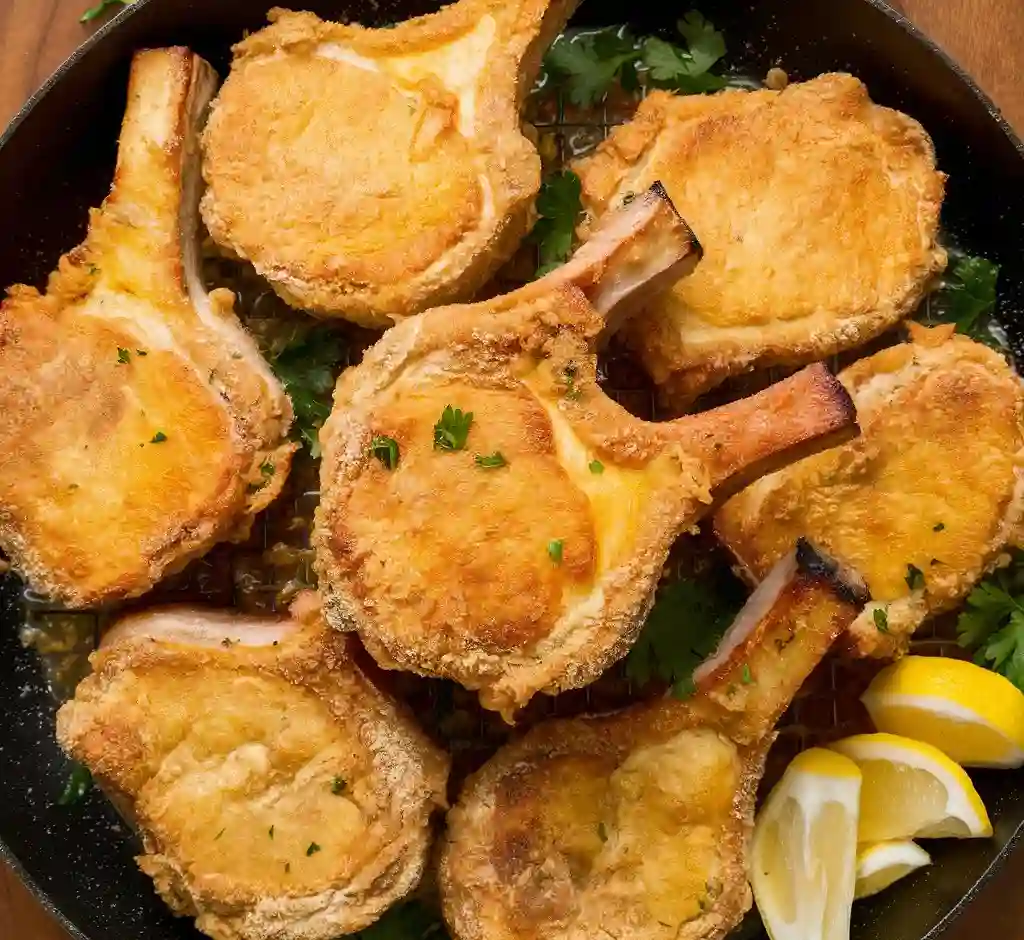
What is an Egg Wash?
- An egg wash is a mixture of eggs and liquid (such as water or milk) used to help breading adhere to food before frying
- It adds moisture, richness, and helps create a crispy exterior
Basic Egg Wash Recipe:
- 1 egg
- 1 tablespoon water or milk
- Salt and pepper to taste (optional)
Tips for Creating the Perfect Egg Wash:
- Use room temperature eggs: This helps the egg wash mix smoothly and evenly
- Don’t over-beat the eggs: Stop whisking once the eggs are fully incorporated with the liquid to avoid creating too much air
- Adjust the liquid ratio: Add more or less liquid depending on the desired consistency and the type of food being fried
- Add flavorings (optional): Mix in herbs, spices, or grated ingredients like garlic or onion to add extra flavor to your fried food
- Use buttermilk or sour cream for extra richness: Replace water or milk with buttermilk or sour cream for a tangier, creamier egg wash
Common Egg Wash Variations:
- Beer egg wash: Replace water with beer for a lighter, crisper coating
- Spicy egg wash: Add diced jalapeños or hot sauce for an extra kick
- Herby egg wash: Mix in chopped fresh herbs like parsley, thyme, or rosemary for added flavor
Troubleshooting:
- Too thick?: Add a little more water or milk to thin out the egg wash
- Too thin?: Add a little more egg or let it sit in the refrigerator for 10-15 minutes to thicken
- Not adhering to food?: Check that the food is dry and the egg wash is at room temperature
Mastering the Art of Coating Pork Chops with Flour
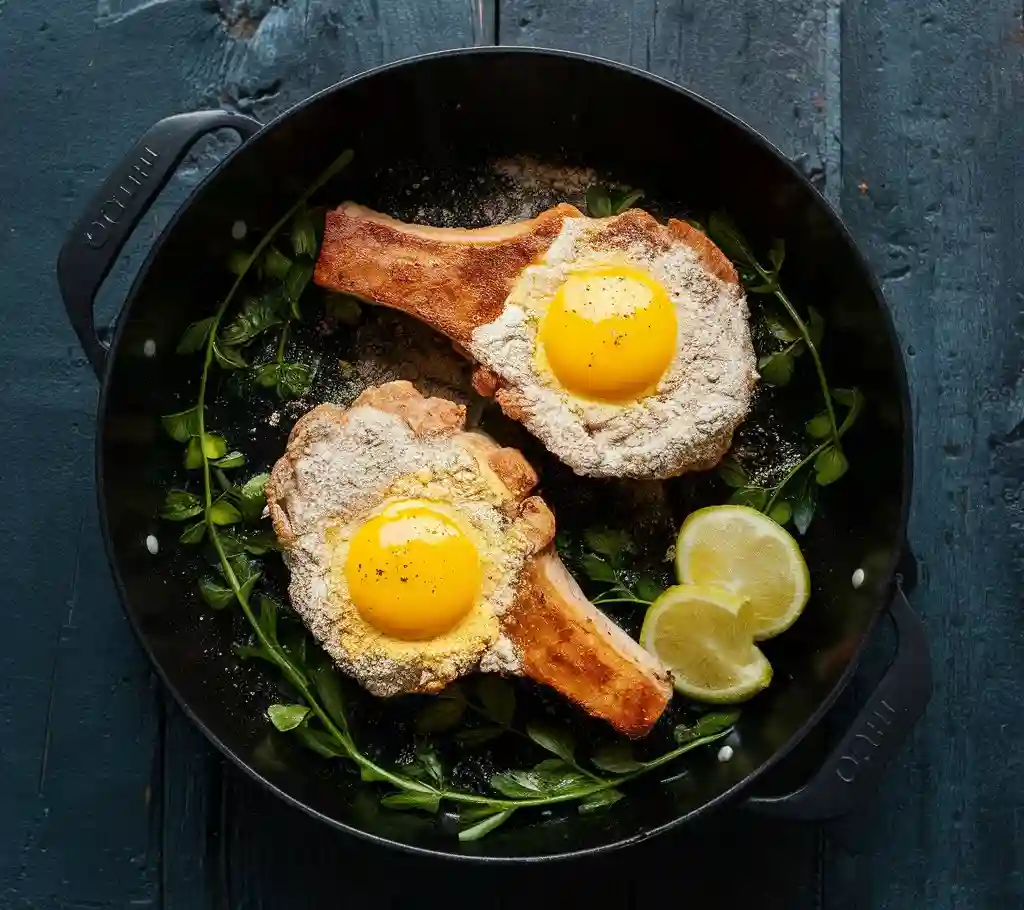
Why Coat Pork Chops with Flour?
- Creates a crispy exterior and tender interior
- Helps browning and adds flavor
- Can be seasoned with herbs and spices for extra flavor
Choosing the Right Flour:
- All-purpose flour: A classic choice for a light, crispy coating
- Bread flour: Produces a crunchier coating, ideal for thicker pork chops
- Panko breadcrumbs: Light and airy, perfect for a delicate coating
- Gluten-free flours: For those with dietary restrictions, use gluten-free flours like almond or coconut flour
Preparing the Flour Coating Station:
- Shallow dish: Use a shallow dish to prevent flour from getting too dense
- Sift or whisk: Sift or whisk flour to remove lumps and aerate
- Seasoning: Add salt, pepper, and any other desired herbs or spices to the flour
Coating Techniques:
- Dredge: Dip pork chop in flour, shaking off excess
- Press: Press flour mixture onto pork chop to adhere
- Tap: Gently tap off excess flour to prevent clumping
Tips for the Perfect Coating:
- Dry the pork chops: Pat dry with paper towels to help flour adhere
- Use the right amount of flour: Not too little, not too much – just enough to coat evenly
- Don’t over-flour: Excess flour can prevent browning and create a thick, heavy coating
- Experiment with seasonings: Try different herbs and spices to add unique flavors to your pork chops
Common Coating Mistakes:
- Insufficient flour: Not enough flour can lead to a weak coating
- Over-flouring: Too much flour can create a thick, heavy coating
- Inconsistent coating: Make sure to coat the pork chop evenly to prevent bare spots
Choosing the Right Oil for Frying Pork Chops
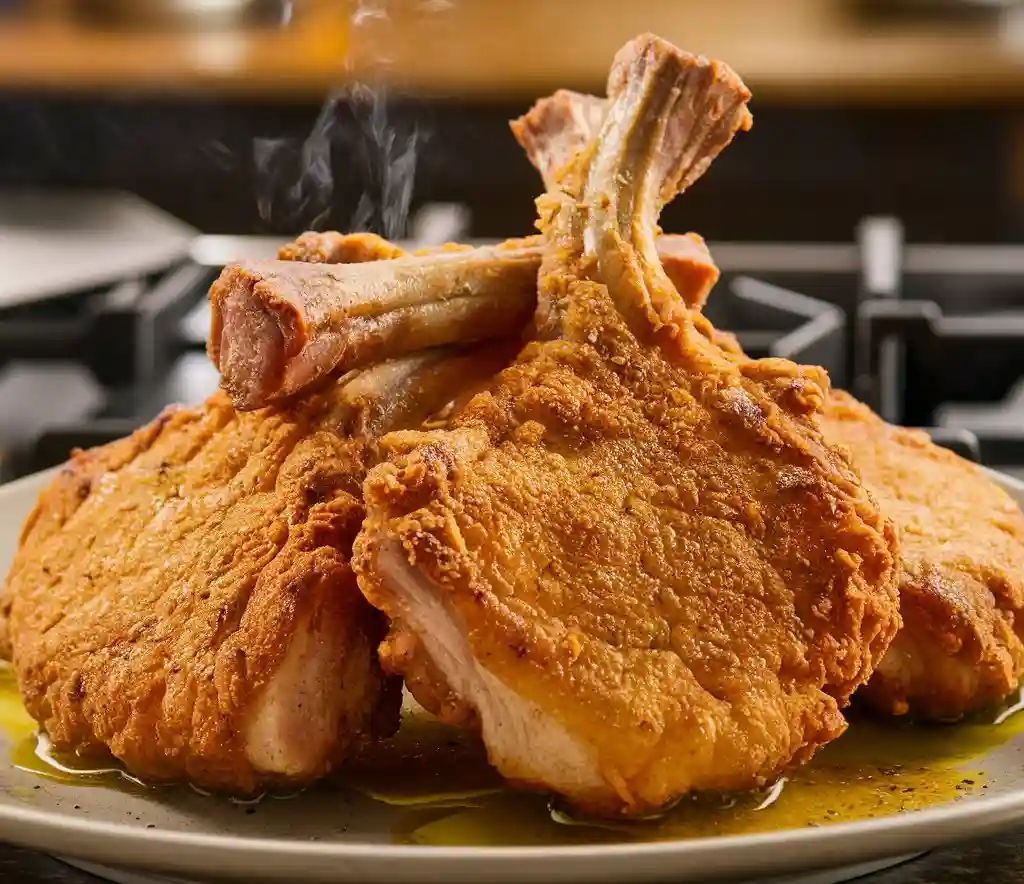
Why Choose the Right Oil?
- Affects flavor, texture, and overall quality of the fried pork chops
- Different oils have varying smoke points, which can impact the frying process
- Some oils are healthier than others, making them a better choice for frequent frying
Popular Oils for Frying Pork Chops:
- Peanut oil:
- High smoke point (450°F/232°C) for crispy, golden-brown pork chops
- Mild nutty flavor complements pork well
- Vegetable oil:
- Neutral flavor and high smoke point (400°F/204°C) make it a popular choice
- Often a blend of various oils, including soybean, corn, and sunflower oil
- Canola oil:
- High smoke point (468°F/242°C) and neutral flavor make it suitable for frying
- Lower in saturated fats compared to other oils
- Lard:
- Traditional choice for frying pork chops, especially in Southern cuisine
- Rich, savory flavor and high smoke point (375°F/190°C)
- Avocado oil:
- Mild, buttery flavor and high smoke point (520°F/271°C) make it ideal for frying
- Rich in heart-healthy monounsaturated fats
- Coconut oil:
- High smoke point (350°F/177°C) and distinct flavor make it suitable for frying
- Rich in saturated fats, but can add a unique flavor to pork chops
Factors to Consider:
- Smoke point: Choose an oil with a high smoke point to prevent burning and ensure crispy pork chops
- Flavor profile: Select an oil that complements the natural flavor of pork chops
- Health considerations: Opt for oils with healthier fat profiles, such as avocado or canola oil
- Cost and availability: Consider the cost and availability of different oils when making your choice
Tips for Frying with Oil:
- Use the right amount of oil: Fill the pan with enough oil to cover the pork chops, but not so much that it’s wasteful
- Heat the oil correctly: Gradually heat the oil to the ideal temperature (usually between 350°F/177°C and 375°F/190°C)
- Don’t overcrowd the pan: Fry pork chops in batches to prevent oil temperature from dropping
- Drain excess oil: Place fried pork chops on paper towels to drain excess oil and prevent sogginess
Tips for Achieving a Golden-Brown Crust
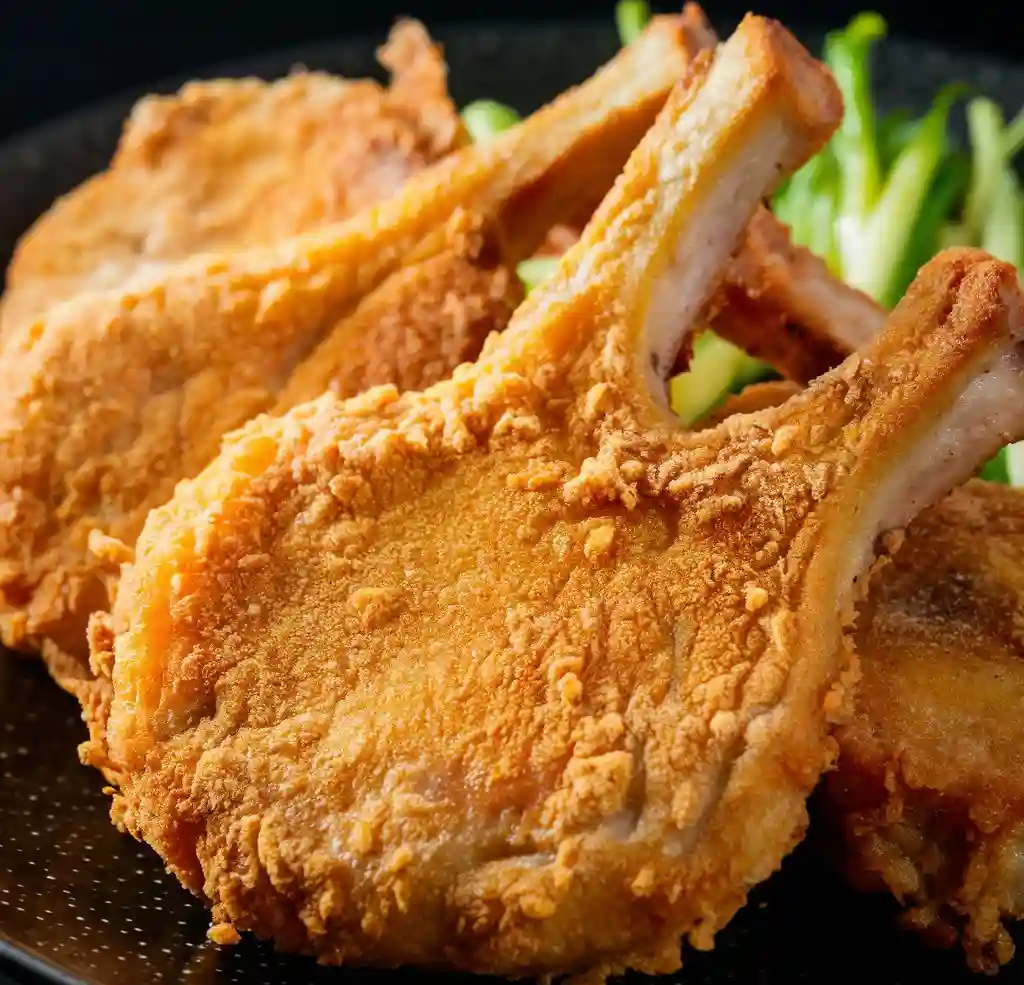
Temperature Control
- Heat the oil to the right temperature: between 350°F (175°C) and 375°F (190°C) for a golden-brown crust
- Use a thermometer to ensure the oil reaches the optimal temperature
- Avoid overcrowding the skillet, as this can lower the oil temperature and prevent even browning
Breading and Coating
- Use the right type of flour: all-purpose flour or panko breadcrumbs work well for a crispy crust
- Don’t over-bread the pork chops: a light, even coating is key to a golden-brown crust
- Press the breading onto the meat gently but firmly to ensure it adheres evenly
Frying Techniques
- Fry the pork chops at the right pace: 3-4 minutes per side for a golden-brown crust
- Don’t stir the pork chops too much: let them develop a crust on the first side before flipping
- Use a gentle touch when flipping the pork chops to prevent breaking the crust
Oil Selection and Maintenance
- Choose the right oil: vegetable oil, peanut oil, or avocado oil work well for frying
- Use fresh oil: old or reused oil can affect the flavor and color of the crust
- Don’t overuse the oil: change it regularly to prevent it from becoming too dark or burnt-tasting
Additional Tips
- Pat the pork chops dry before breading to remove excess moisture
- Don’t over-bread or over-fry the pork chops, as this can lead to a greasy or burnt crust
- Experiment with different seasonings and spices in the breading mixture to enhance flavor and color
Cooking Pork Chops to Perfection with a Meat Thermometer
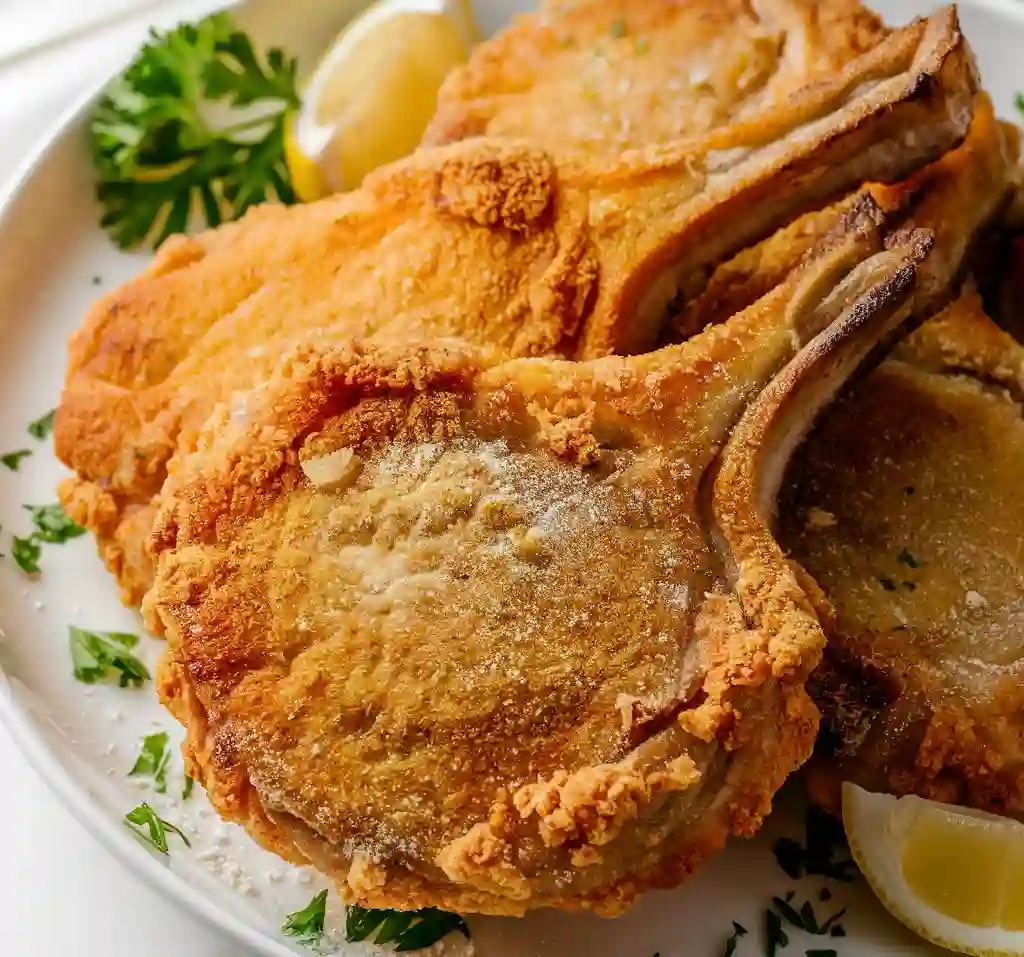
Why Use a Meat Thermometer?
- Ensures food safety by cooking to a safe internal temperature
- Guarantees juicy and tender pork chops
- Eliminates guesswork and ensures consistent results
Internal Temperature Guidelines
- Medium Rare: 145°F (63°C) – 150°F (66°C)
- Medium: 150°F (66°C) – 155°F (68°C)
- Medium Well: 155°F (68°C) – 160°F (71°C)
- Well Done: 160°F (71°C) and above
How to Use a Meat Thermometer
- Insert the thermometer into the thickest part of the pork chop, avoiding any fat or bone
- Wait for the temperature to stabilize (about 10-15 seconds)
- Check the temperature against the guidelines above
- Cook to the desired internal temperature, then let the pork chops rest for 3-5 minutes before serving
Tips for Accurate Temperature Readings
- Use a digital thermometer for quick and accurate readings
- Avoid touching bone or fat with the thermometer, as this can affect the reading
- Insert the thermometer at a 45-degree angle to ensure accurate readings
- Take multiple readings to ensure consistency
Cooking Methods and Temperature Control
- Pan-Seared: Cook to desired internal temperature, then finish with a 1-2 minute sear in a hot skillet
- Oven-Roasted: Cook to desired internal temperature, then let rest for 5-10 minutes before serving
- Grilled: Cook to desired internal temperature, then let rest for 3-5 minutes before serving
Additional Tips
- Let the pork chops come to room temperature before cooking for more even cooking
- Don’t overcrowd the skillet or grill, as this can affect temperature control
- Use a meat thermometer in conjunction with other cooking methods, such as cooking time and visual cues, for optimal results
Serving and Enjoying Your Crispy Fried Pork Chops
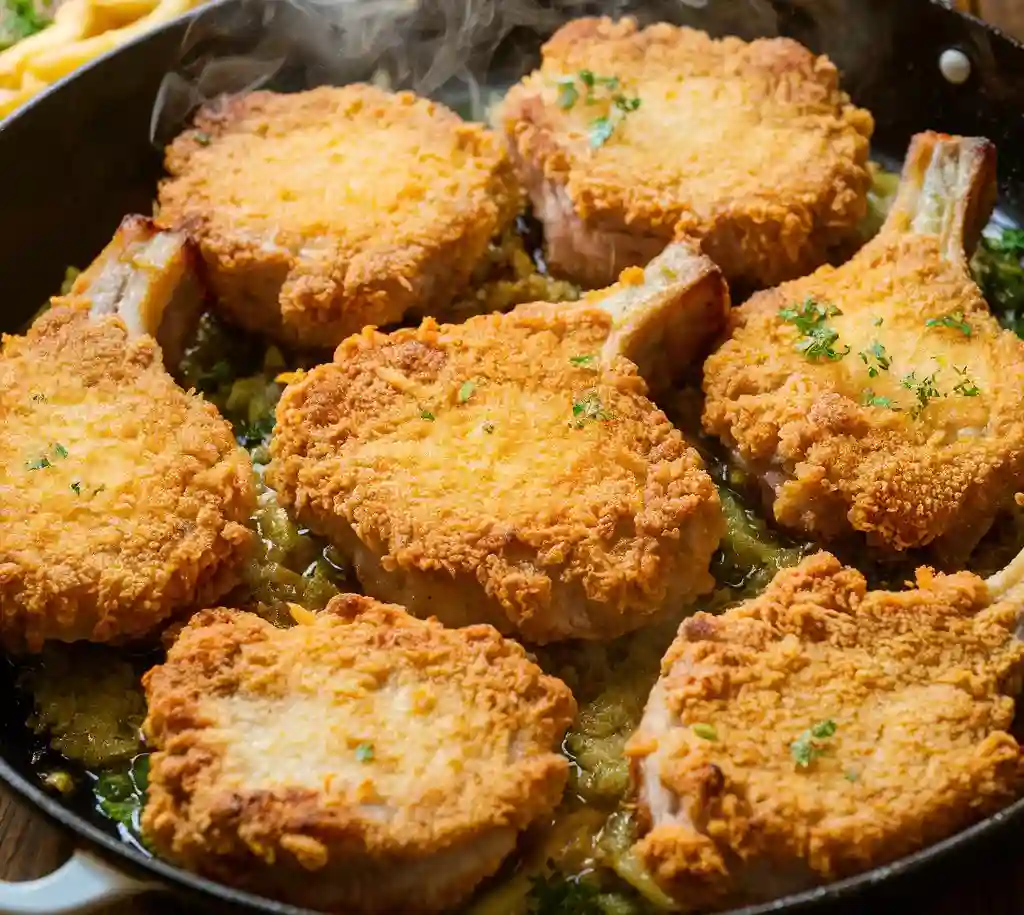
Serving Suggestions
- Serve hot and crispy, straight from the skillet or oven
- Pair with your favorite sides, such as:
- Mashed potatoes
- Roasted vegetables
- Garlic bread
- Coleslaw
- Baked beans
- Add a tangy or sweet sauce, such as:
- BBQ sauce
- Honey mustard
- Apple cider glaze
- Ranch dressing
Garnish and Top with Fresh Flavors
- Fresh herbs, such as parsley, thyme, or rosemary
- Lemon wedges or slices
- Chopped scallions or chives
- Crushed red pepper flakes for added heat
- Crumbly bacon or chopped nuts for added crunch
Get Creative with Sandwiches and Wraps
- Serve on a bun with your favorite toppings, such as:
- Lettuce and tomato
- Pickles and onions
- Cheese, such as cheddar or American
- Bacon or sausage
- Wrap in a tortilla with:
- Coleslaw and pickles
- BBQ sauce and onions
- Shredded cheese and sour cream
Make it a Meal with a Salad
- Top a mixed green salad with crispy fried pork chops and:
- Cherry tomatoes and cucumber
- Croutons and shaved parmesan
- Balsamic vinaigrette or ranch dressing
- Add a side of warm bread or crackers for a satisfying meal
Leftovers and Reheating
- Store leftovers in an airtight container in the refrigerator for up to 3 days
- Reheat in the oven or skillet until crispy and hot
- Use leftover pork chops in new dishes, such as:
- Pork chop sandwiches
- Pork chop tacos
- Pork chop quesadillas
- Pork chop soup or stew
FAQs
Q: What type of flour is best for breading pork chops?
A: All-purpose flour or panko breadcrumbs work well for a crispy coating.
Q: Can I use whole eggs or just egg whites for the egg wash?
A: You can use either whole eggs or just egg whites, depending on your preference. Whole eggs will add more richness and moisture, while egg whites will provide a crisper coating.
Q: How do I prevent the breading from falling off during frying?
A: Make sure the pork chops are dry and seasoned before breading, and press the breading onto the meat gently but firmly. This will help the breading adhere to the meat.
Q: Can I fry pork chops in a deep fryer or air fryer?
A: Yes, you can fry pork chops in a deep fryer or air fryer for a crispy exterior and juicy interior. Adjust cooking times and temperatures according to the manufacturer’s instructions.
Q: How do I store leftover fried pork chops?
A: Store leftover fried pork chops in an airtight container in the refrigerator for up to 3 days. Reheat in the oven or skillet until crispy and hot.
Q: Can I freeze fried pork chops?
A: Yes, you can freeze fried pork chops for up to 3 months. Simply thaw frozen pork chops overnight in the refrigerator or reheat in the oven or skillet until crispy and hot.
Q: Are fried pork chops healthy?
A: Fried pork chops can be a treat, but they are not the healthiest option. To make them healthier, try baking or grilling pork chops instead of frying, and choose leaner cuts of meat.

Amelia Winthrop is the creative force behind Skillful Cooking, a blog that serves as a canvas for her culinary creations. With a philosophy that cooking should be accessible and enjoyable, Amelia crafts recipes that blend simplicity with sophistication. Her intuitive approach to the kitchen encourages others to embrace the joy of cooking and the pleasure of sharing meals with loved ones.

